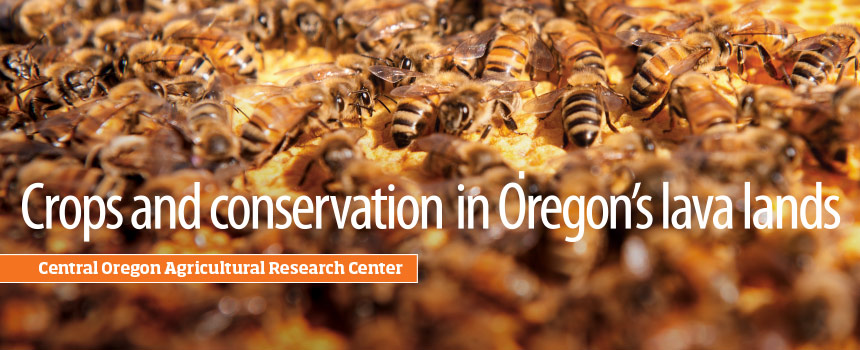Hay, guys

“Forages are the Rodney Dangerfield of crops—they don’t get any respect,” laughs OSU forage specialist Mylen Bohle. Yet forages—irrigated hay and pasture grasses—are the number-one crop in Oregon in terms of acreage.
Combining research and Extension, Bohle aims to raise awareness of Oregon’s high-quality hay. Working with research colleagues and growers across the state, Bohle has tested and trialed many new varieties of forages such as alfalfa, cereals, and grasses. He has worked with OSU barley breeders to develop winter forage barley that is more disease-resistant and better suited to the particular climates of Oregon’s hay-producing regions. He helps growers match the pest resistance ratings of alfalfa varieties with individual field environments. And because not all bales are created equal, he’s helped establish standards of product quality for hay and forage, based on nutritional analysis and digestible fiber content in hay.
[caption caption="High-quality forage begets high-quality meat products. (Photo by Tom Gentle.) "] [/caption]
[/caption]
Being able to measure the quality of Oregon hay has raised its value as an export product. Although less than 10 percent of Oregon hay production is shipped overseas, the level of quality required by the export market has set a high standard for the entire industry. And that’s led to another value in improved hay and grass selections: high-quality forage begets high-quality meat and dairy products.
Bohle also points to the environmental benefit of hay and forages. Most are perennial crops, which means they remain in the field year-round and grow back every spring. Their root systems anchor the soil, reducing wind and water erosion. And because some forage plants, such as alfalfa, add nitrogen to the soil, they are often used as rotation crops to help improve soil health and fertility.
With so many benefits from forage crops, Bohle is eager to spread the word. He helped establish the Central Oregon Hay Growers Association, the Oregon Hay and Forage Association, and the Oregon Forage and Grassland Council to help improve production, marketing, and analysis of forage quality. Someday, he hopes the state’s $640 million hay industry will have the same brand magic as Oregon Pinot noir.
